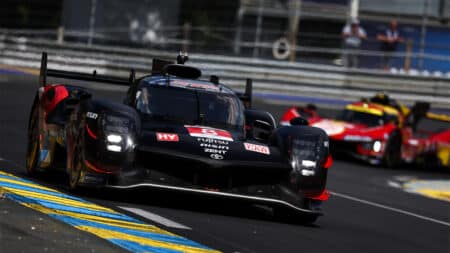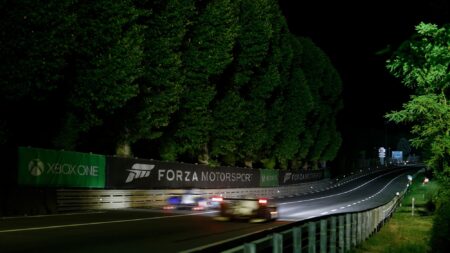Toyota expects it to be 10sec slower at Le Mans than last year’s car, which set a pole time of 3min 15.267sec.
It’s also 250mm longer, 100mm wider and 100mm higher than the TS050 to bring it in line with new requirements to be a maximum 5100 mm in length, 2000 mm wide, and have a wheelbase of 3150 mm.
Total power output is capped at 680bhp so the Toyota’s electronics will reduce the engine’s performance when the hybrid system is deployed.
“The new regulations are designed to showcase road-relevant technology in WEC whilst also delivering a top-level, attractive spectacle,” said technical director Pascal Vasselon. “We are looking forward to welcoming new competitors and being part of an exciting future for endurance racing with our GR010 Hybrid.
“It is a completely new car, designed to a different philosophy. A major difference is the architecture of the hybrid system; we will have one kinetic energy recovery system and brake-by-wire, on the front axle. This means we had to install a starter motor and fully hydraulic rear brakes for the first time in our WEC project.”
The GR010 was developed alongside the roadgoing GR Super Sport and the design similarity is partly thanks to a new aerodynamic philosophy introduced this year, which limits overall downforce.
“The biggest difference between the GR010 Hybrid and its predecessor is in terms of the aerodynamics,” said chassis designer John Litjens. “In the past, the regulations limited what was allowed in many areas but under the Le Mans Hypercar rules, all cars have to be within certain performance windows in terms of downforce and drag, but there is more freedom allowed for the bodywork shapes and concepts. You can see the result of this freedom very clearly on the GR010 Hybrid.”
Toyota enters 2021 as the title favourites, with the only major factory-backed Hypercar programme. It’s likely to face a tougher from Peugeot’s Hypercar next year, followed by another wave of competition expected in 2023, when Audi and Porsche arrive with cars built new LMDh regulations. Close racing should be achieved with a Balance of Performance process that allows both classes of cars a fighting chance of victories.




